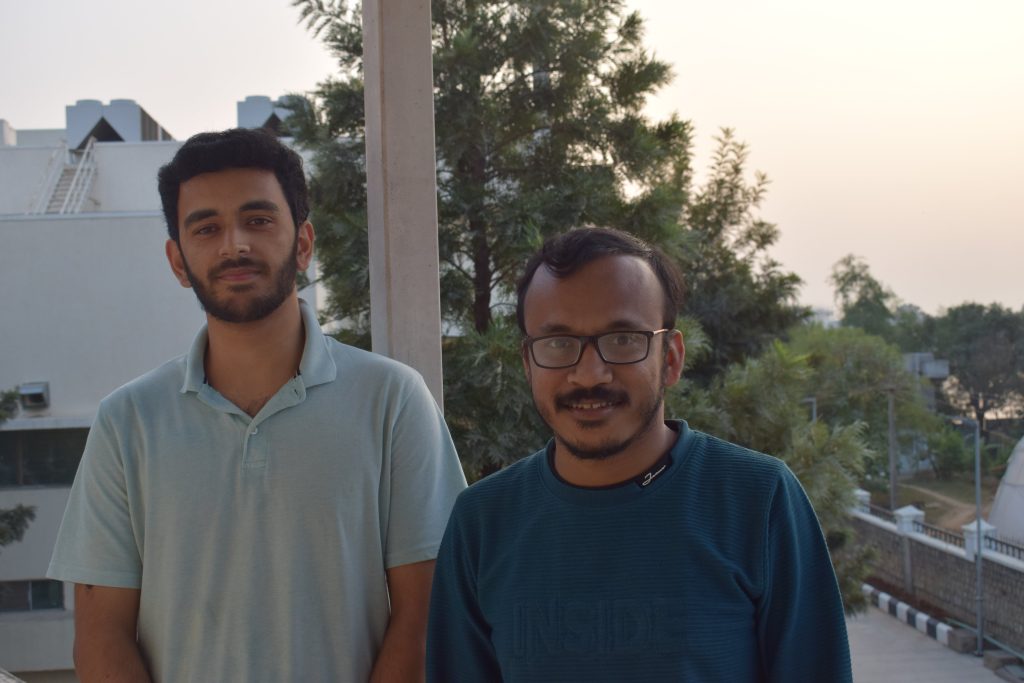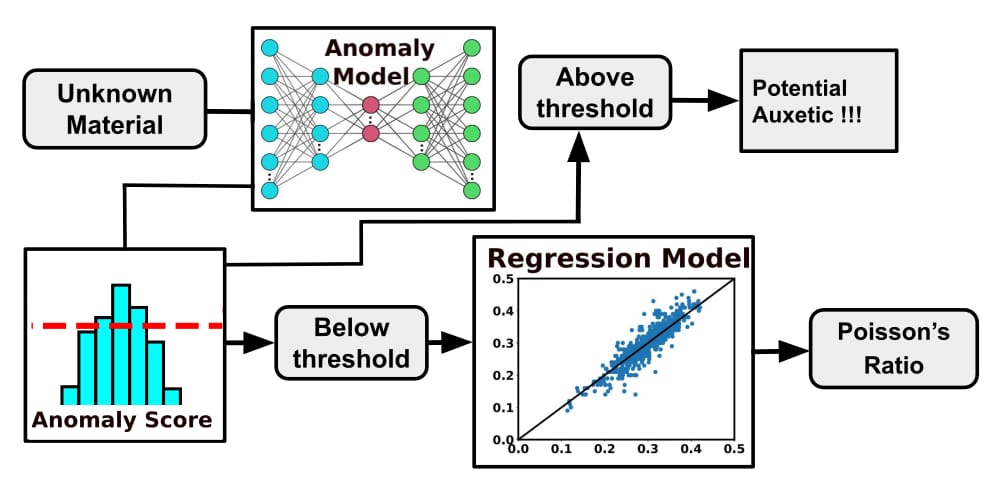New study categorises rare materials to aid machine learning approaches
Machine learning approaches bank on the availability of large datasets. However, instances where extensive datasets are not available, for example: materials having a negative Poisson’s ratio or a negative refractive index, machine learning approaches stumble upon a roadblock. Raheel Hammad and Sownyak Mondal, graduate students at TIFR Hyderabad, identified this gap during their initial explorations in the world of Big Data. What started off as literature survey soon led to an elegant solution that can extract information regarding materials that exhibit properties that are uncommon in nature.

Hammad and Mondal focussed their efforts on one exotic property known as auxeticity and devised a strategy that would successfully classify auxetic and non-auxetic materials.
A ball of dough flattens when compressed between your palms. This is non-auxetic behaviour. However, if this ball of dough does not flatten on being compressed but contracts in size laterally, it would be termed ‘auxetic’. In an existing database, typically, less than 1% of the data points correspond to auxetic materials. This dearth of information makes it difficult for machine learning algorithms that can categorise auxetic materials from a mix of auxetic and non-auxetic materials.
Hammad and Mondal designed a model where potential auxetic materials are considered as anomalies. Each material is assigned an anomaly score. Materials with scores above a prescribed threshold are classified as auxetic. While this method accomplishes the goal of identifying rare auxetic materials, the authors utilise this method to obtain further information about the not-so-rare materials as well. With the help of available data regarding non-auxetic materials, they feed anomaly scores which are below the threshold into an algorithm that provides the exact Poisson’s ratio of these non-auxetic materials.

This study successfully identifies rarely occurring auxetic materials from a large dataset, demonstrating the feasibility of a method that could be tweaked to derive information about other exotic properties that exist in nature.
Publication reference: Hammad, R., & Mondal, S. (2023). Predicting Poisson’s Ratio: A Study of Semisupervised Anomaly Detection and Supervised Approaches. ACS Omega.
Content: Anusheela Chatterjee (A truncated version of this text appears on institute social media accounts as well.)
